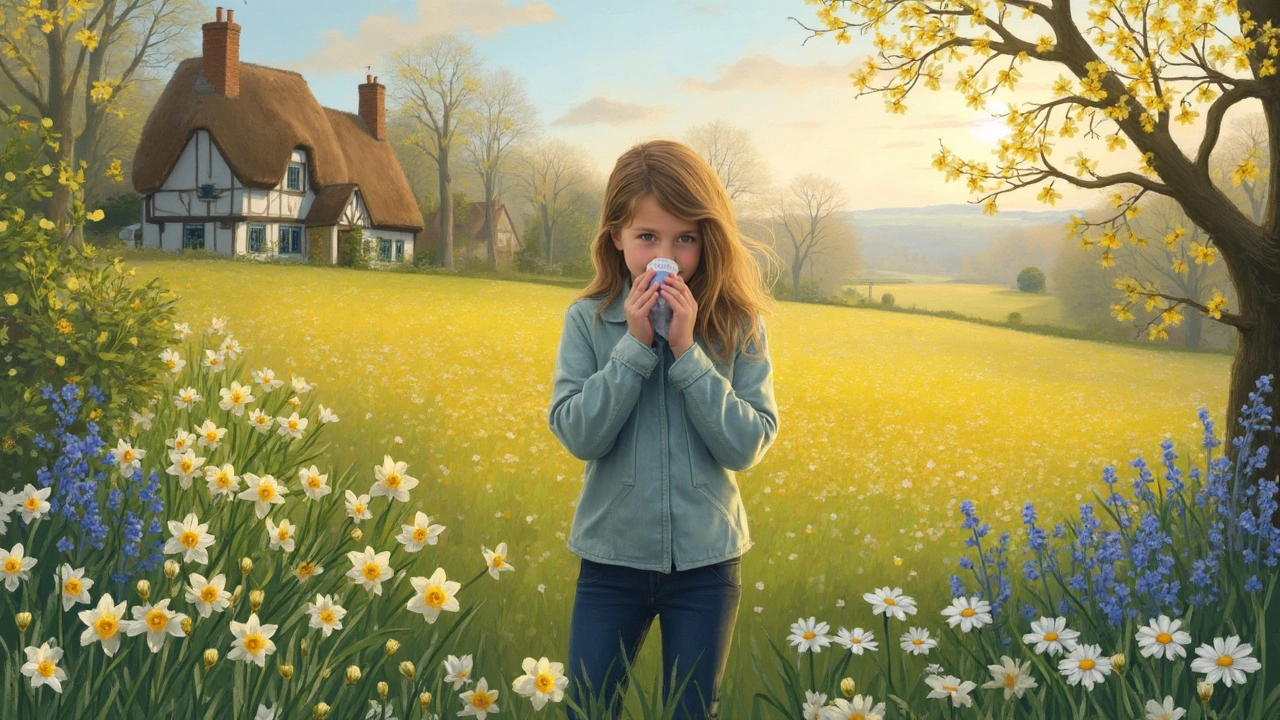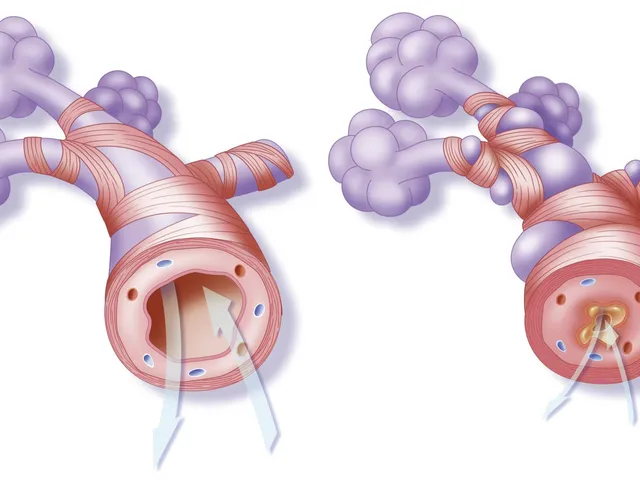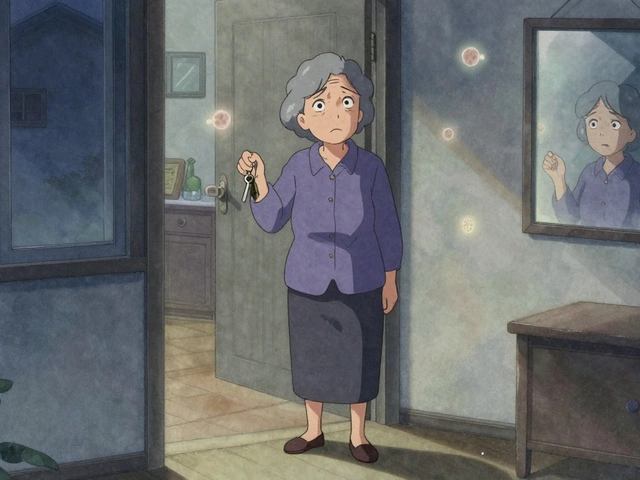Ever noticed how your sneezing seems to start earlier each spring and linger a bit too long into the summer? You’re not alone, and it’s not just your imagination. With climate change knocking on our doorstep, it’s bringing along an unwelcome guest: heightened seasonal allergies.
As global temperatures climb, plants respond by blooming earlier and longer, which means more pollen in the air for a longer stretch of time. More pollen equals more misery for those with allergies.
Warming temperatures aren’t the only culprit. Changes in weather patterns, such as increased rainfall in some areas and droughts in others, also play a role in how plants grow, further complicating the allergy picture. This means understanding climate change goes a long way in managing those pesky sniffles and sneezes.
Changing Climate Trends
So, what’s up with the weather, and why is it turning everyone into a walking tissue box? Climate change isn’t just a buzzword; it's a game-changer for the environment, with direct impacts on seasonal allergies.
The Earth’s average temperature has risen about 1.2 degrees Celsius since the late 19th century, largely due to increased carbon dioxide and other human-made emissions. This upswing in temperatures doesn’t take a break, and it’s shifting how and when plants pollinate.
Warmer winters and earlier springs mean the pollen season kicks off sooner than it used to. Not only that, but it sticks around longer, giving plants more time to release their pollen and cause all of us more grief.
Rising CO2 Levels
Higher carbon dioxide levels don't just contribute to rising temperatures; they also act like fertilizer for plants. Some studies show that increased CO2 can make plants grow faster and produce more pollen. It's like turning up the volume on pollen production, something we can all do without, honestly.
Altered Weather Patterns
Here’s another twist: climate change shakes up rainfall patterns. More rain can mean lush plant growth and a big pollen party, while drought in some areas can make things worse by causing plants to stress and release pollen prematurely.
Understanding these changing climate trends gives us the upper hand in coping with their effects on our allergies.
Pollen and Plant Behavior
It's no secret that plants play a big role in how seasonal allergies hit us. When we talk about blooming times, it's really about how plants respond to temperature changes. With climate change altering the usual patterns, plants are getting the memo to start blooming sooner and sticking around longer.
One key example is ragweed, notorious for causing hay fever. Normally, ragweed releases its pesky pollen for a few weeks, but with warmer temperatures, this period is extending. More pollen means more time for your immune system to react. Not fun, right?
The rise in pollen doesn't stop with ragweed. Trees and grasses are also contributing to the pollen party, thanks to climate change. This is where the weather patterns come into play. Warmer winters and early springs tempt trees to start their pollen production ahead of schedule. If you've noticed allergy symptoms cropping up earlier in the year, it’s likely because of these subtle shifts in nature’s timeline.
Impact of Lengthened Growth Cycles
Climate change doesn't just affect when plants bloom, but also how long they keep at it. Longer growth cycles can double the tough times for allergy sufferers. A longer pollen season ramps up the amount of allergens in the air, giving you a nose full of irritation for weeks longer than before.
On top of that, certain plants, like grasses, might produce more potent pollen under changing conditions. This is partly because increased carbon dioxide levels can stimulate plant growth, leading to more robust pollen production. In other words, it's not just more pollen, but more intense pollen.
Understanding how these changes happen can help you prepare. Keeping track of local pollen forecasts, avoiding outdoor activities during peak pollen times, and taking allergy meds early in the season can be a game-changer!

Health Impacts
It's no secret that seasonal allergies can be a huge nuisance, but what you might not know is just how much they can affect your health. With the extended pollen seasons due to climate change, there's more than just the sniffles and itchy eyes to worry about.
More Severe Symptoms
When pollen levels are high, symptoms can get pretty intense. We're talking about bad nasal congestion, headaches, and fatigue. Not the ideal way to spend your day. For people already dealing with asthma, it's worse. They might see an increase in asthma attacks or need to use their inhaler more often.
Affecting Sleep and Daily Life
Ever tried sleeping with a blocked nose or super itchy eyes? It's as uncomfortable as it sounds. Poor sleep due to allergy symptoms can lead to daytime fatigue, difficulty concentrating, and even mood swings. That’s right, your allergies could be messing with your work performance and how you interact with family and friends.
Economic Impact
Now imagine having to miss work or school due to these symptoms. It's not just uncomfortable—it's costly. Lost workdays and school days, coupled with trips to the doctor and medication costs, add to the burden.
If you’re one of the many allergy sufferers, knowing the impact of climate change on your seasonal allergies could help you stay ahead. Whether it’s finding the right medication or making lifestyle changes, taking control of the situation can make all the difference.
Coping Strategies
Dealing with seasonal allergies can be a real drag, but there are ways to make it manageable. Understanding the connection between climate change and allergies can help you stay ahead of your symptoms. Here are some handy strategies to consider:
Monitor Pollen Levels
A little heads-up can go a long way. Keep an eye on pollen forecasts, which are usually available online or through a weather app. Knowing when pollen counts are high can help you plan when to stay indoors, especially in the mornings when levels tend to peak.
Allergy-Proof Your Home
Your home should be a safe haven. Use air purifiers with HEPA filters, and keep windows shut during high pollen days to keep allergens out. Regular cleaning, vacuuming, and washing of bed linens in hot water can make your home less inviting for allergens.
Over-The-Counter Relief
OTC medications like antihistamines are your friends. They can relieve itchiness and sneezing. Be sure to consult with your healthcare provider to find what works best for you. And don't forget nasal sprays that can help reduce nasal congestion.
Natural Remedies
If you prefer a more natural approach, consider trying local honey or a saline nasal rinse. Some people swear by these methods to help alleviate symptoms, and they’re relatively harmless to try.
Strong Offense with the Right Diet
Did you know what you eat can also influence how you feel? Adding foods rich in omega-3 fatty acids, like fish and nuts, can help reduce inflammation. Also, vitamin C-rich foods are known for their antihistamine effects, giving you a natural defense against allergens.
Long-Term Prevention
Consider consulting an allergist for specific long-term strategies tailored to you. Allergy shots might be an option for those whose lives are severely affected. While they take commitment, they can significantly reduce symptoms over time.
| Strategy | Effectiveness | Ease of Use |
|---|---|---|
| Pollen Monitoring | High | Easy |
| Allergy-Proofing Home | Medium | Moderate |
| OTC Medications | High | Easy |
| Natural Remedies | Varied | Easy |
| Diet Adjustments | Medium | Moderate |
Navigating the challenges of seasonal allergies doesn’t have to be a solo journey. With awareness and the right strategies, you can enjoy life despite the whims of environmental changes.

Future Outlook
Looking ahead, the connection between climate change and seasonal allergies isn’t just a passing concern. With global temperatures predicted to rise further, we can expect longer allergy seasons and more intense pollen counts.
Researchers are already seeing these patterns. According to a study, the pollen season in North America has lengthened by about 20 days over the past three decades. Imagine what a dramatic impact this can have on anyone prone to allergies.
Adaptations in Agriculture
Farmers may need to adjust what and when they plant to cope with changing conditions. It might mean trying new crops or adjusting irrigation practices to accommodate both the environmental shifts and the relentless march of pollen.
Opportunities for Innovation
- Developing low-allergen plant species
- Using tech to monitor pollen levels in real-time
- Advancing allergy medication to tackle more aggressive symptoms
This alignment of environment and agriculture can introduce novel solutions to allergy management, helping buffer against some of the frustrating symptoms.
Preparing for the Unknown
On a personal level, keeping an eye on climate patterns can help predict particularly tough allergy seasons. While we can’t stop the overall climate shift overnight, being proactive in preparing through lifestyle adjustments and medical innovations can help.
Staying informed and adapted could be our best bet yet against the double whammy of climate change and allergies.






Attila Abraham
February 26, 2025 AT 18:26Michelle Machisa
February 27, 2025 AT 18:59Ronald Thibodeau
February 28, 2025 AT 14:18Shawn Jason
March 1, 2025 AT 16:43Monika Wasylewska
March 2, 2025 AT 04:49Jackie Burton
March 2, 2025 AT 19:15Philip Crider
March 2, 2025 AT 19:55neville grimshaw
March 3, 2025 AT 19:07Carl Gallagher
March 4, 2025 AT 20:10bert wallace
March 5, 2025 AT 18:56Neal Shaw
March 5, 2025 AT 21:33Hamza Asghar
March 7, 2025 AT 21:32Karla Luis
March 8, 2025 AT 06:05jon sanctus
March 8, 2025 AT 19:33Kenneth Narvaez
March 9, 2025 AT 10:32Steve Davis
March 10, 2025 AT 20:07Christian Mutti
March 12, 2025 AT 19:56